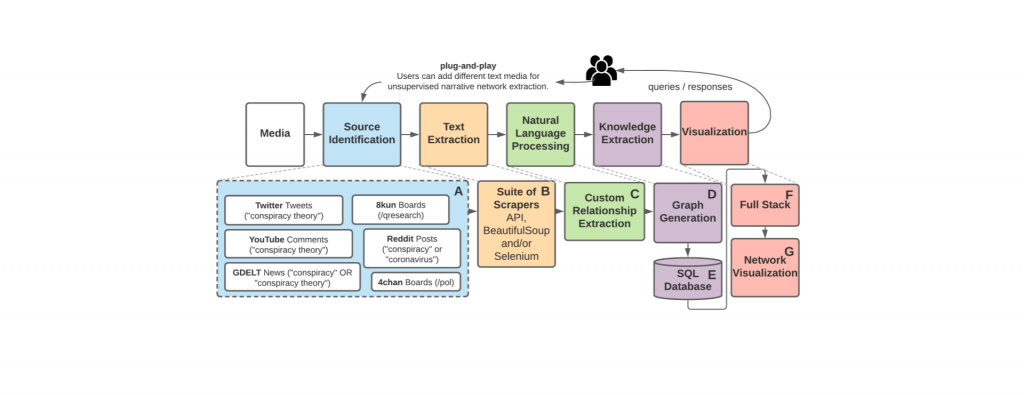A fascinating paper by researchers at UCLA and Berkeley applying relationship extraction and analyzing the result in a graph context to better understand conspiracy theories:
As the U.S. Capitol riots of January 6, 2021 attest, conspiracy theories can lead to civil unrest. Many ”netizens” of the radical online fora that host these conversations are not themselves radicalized. However, the limited in-line context necessary to evaluate their legitimacy, along with readers’ predisposition to believe stories that reinforce their existing worldviews, can create interpretations of real-world events that conflict with fact. Recent work proposes automated computational methods to reconstruct the missing contexts of conspiracy theories. While such work has successfully exposed several recent conspiracy theories, a robust real-time system that builds on this success at scale is needed. This paper presents one such implementation with: (a) A plug-andplay module for adding and removing heterogeneous text sources, (b) A scalable infrastructure that caters to the constantly expanding knowledge space, (c) Automation to parse real-time stories, and (d) An intuitive interface with a feedback module for users to directly evaluate the coherence of the generated context. The system returns a dynamic infinite-vocabulary Knowledge Graph (KG) that represents the directed relationships (edges) between critical actors (nodes) that feature in conspiracy theories. Our current implementation features 6 heterogeneous data sources accessed for > 5000 posts/day with a low search-latency (< 5ms for querying > 100, 000 relationships). Evaluation (with Amazon Mechanical Turk (AMT)) suggests our visualization captures well the coherence of the resultant conspiracy theories, with a positive skew (> 21.0) toward positive ratings.
